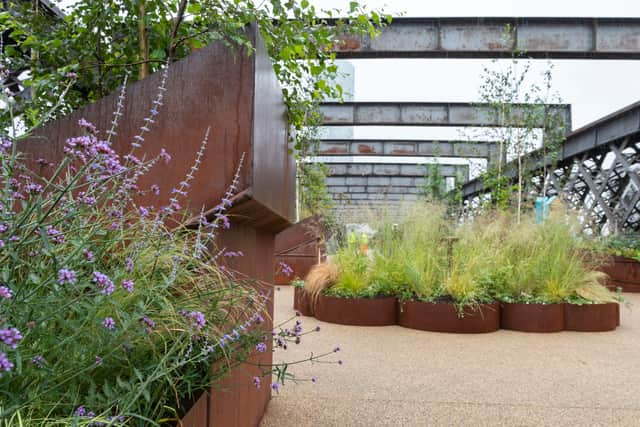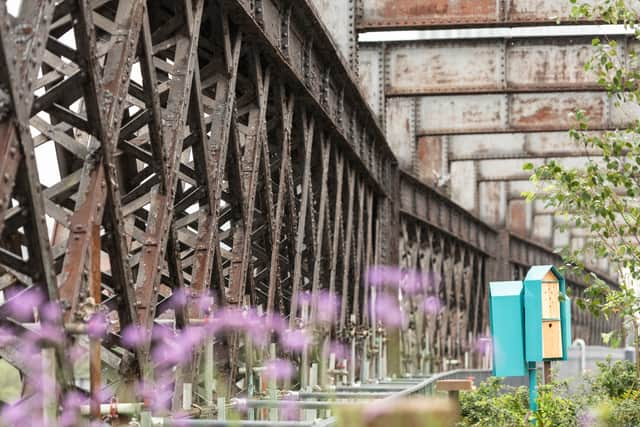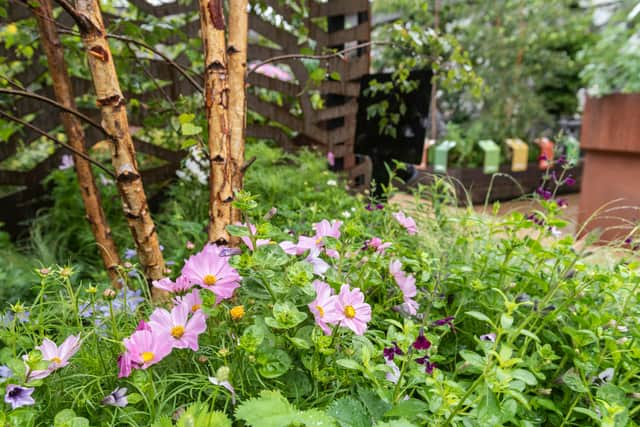Castlefield Viaduct: Manchester’s new sky park prepares to welcome first visitors as opening date confirmed
and live on Freeview channel 276
The team behind the transformation of a historical Manchester landmark into a new ‘sky park’ for the city has revealed the opening date for the attraction.
The first visitors will be welcomed onto the Castlefield Viaduct on 30 July.
Advertisement
Hide AdAdvertisement
Hide AdWork has been going on over the past five months to turn the 330-metre steel viaduct into an elevated park with trees, plants and flowers.
Here’s what you need to know about the launch of Manchester’s new urban green space.


When is the Castlefield Viaduct opening and what is it?
The Castlefield Viaduct will open to the public as a temporary urban park on Saturday 30 July and will initially be open for a period of 12 months.
MC Construction, Twelve Architects, and four local partners have been working with the National Trust’s gardening specialists and apprentices to create the new park with thousands of plants, shrubs and trees planted on the old industrial structure.
Advertisement
Hide AdAdvertisement
Hide AdVisitors will be able to explore part of the viaduct and find out more about its heritage, Manchester’s relationship with plants and trees and urban gardening .
There are a variety of planting displays across the viaduct, while a section has also left untouched to provide a sense of how nature has reclaimed it since the site closed in the late 1960s.
The design of the sky park subtly reflects the structure’s history and shape and also contains nods to the city’s industrial past, with the team behind it hoping it will inspire conversations and thoughts about the future of the listed viaduct.
In total 100 people a day will be able to visit the viaduct. Entry will be free, but a booking system will be in place to help manage the numbers.
Advertisement
Hide AdAdvertisement
Hide AdVisitors will be able to join guided walks and there are also plans to host various events including workshops and consultations.
You can find out more about the viaduct or booking a visit here.
What has been said about the viaduct and its opening?
Hilary McGrady, director-general of the National Trust, said: “Today is incredibly exciting. The idea of transforming the viaduct has been around for a while, but it was always put in the ‘too hard to achieve box’ and set aside.
“For that long-held vision to finally come to life is therefore testament to the strong partnerships we have formed and the hard work of so many.
Advertisement
Hide AdAdvertisement
Hide Ad“What I love about this space is that it encapsulates so much of what the Trust’s work is about: opening up our shared heritage for everyone to enjoy, creating beautiful spaces and bringing people closer to nature. It’s about creating something new for the community, while also protecting an iconic piece of industrial history.
“We hope hundreds of people will visit and enjoy spending time in nature among the trees, shrubs and wildlife that is already starting to make this space its home. We’ll also be able to learn from this project and really start to understand more about what and how we can bring more green spaces and wildlife to thousands more people across the country in urban spaces.”


Head of urban places at the National Trust, Duncan Laird, said: “This has been an intensely busy few months as we prepared to open the doors of the pilot project, and we are incredibly excited to finally be able to open this space for people to visit for the first time in over 50 years.
“As the trees and plants start to bed in and grow it will slowly begin to match the vision for this space. We will be keenly listening to visitor feedback that we will use to shape the ongoing evolution of the viaduct – we’re at the start of the journey; not the end!”
Advertisement
Hide AdAdvertisement
Hide AdAndy Jasper, national head of gardens and parklands at the National Trust, said: “Creating a garden on an industrial heritage structure such as this is new territory for us and we have created a test bed that represents how the park in the sky might be, if the people of Manchester want it.
“I cannot wait to see what people say and I am intrigued to see how the plant life will take in its new surroundings.
“In addition to greening up a heritage structure, the planting reflects a true celebration of Manchester’s botanical heritage with the county flower, cotton grass, and fern species once collected by Manchester suffragist and botanist, Lydia Becker.”
What have the partner organisations done on the viaduct?
Four partner organisations are involved with the project, with each getting a section of the viaduct to design and plant as they wish.
Advertisement
Hide AdAdvertisement
Hide AdUrban Wilderness has worked with Manchester based charity, 42nd Street, which supports young people who have suffered mental health challenges. Its Garden of Possibilities features a geodesic dome and plants known for having positive effects on mental health including nettle, feverfew and lemon balm.
The Science and Industry Museum has filled its garden with plants that engage the senses and encourage visitors to take an active role exploring the local historical landscape, taking inspiration from the popular attraction’s location where a station on the world’s first steam-powered intercity railway once stood.


The theme of the City of Trees partner plot is Trees – Past, Present and Future. It showcases trees, shrubs and flowers that were used during the Industrial Revolution and that are significant in Manchester today as the city responds to climate change.
Castlefield Forum has worked with landscape architects BDP to create their garden which mirrors the distinct features of Castlefield, including the viaduct, the canal, Victorian warehouses and the Roman fort which sits just beneath the sky park.
